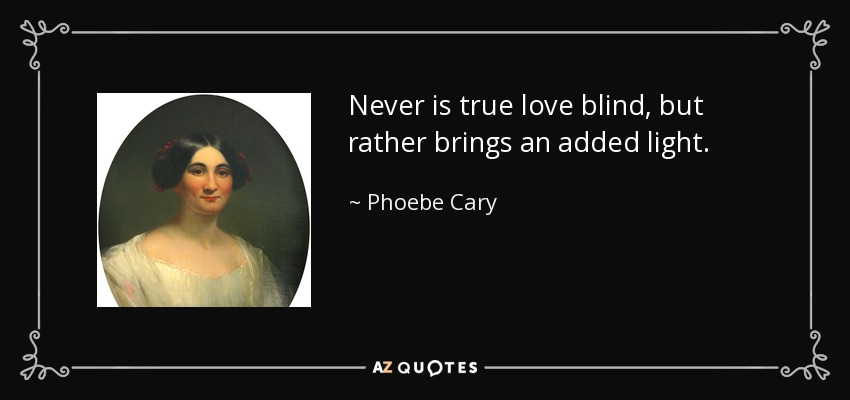We in this article below will provide the students with the summary of the legend of the northland along with the ncert solutions. We have explained the poem stanza-wise, focussing on explaining the poetic devices and the difficult meanings in the stanzas. The poem is in the form of a ballad written by Phoebe’s Cary.
A Ballad is a kind of poem that tells a story in the form of short stanzas and each stanza is of four lines. It is a part of folk culture and passed on to posterity in oral form.
A Legend Of The Northland Central Theme
The story is all set in the Northland which is situated near the North Pole. the exact palace is not at all mentioned in the poem. The legend here means a historic and a very old story that has been passed on to generations.
The poem is about an old lady who angered Saint Peter because of his greed. One day, Saint Peter was preaching roaming around the world and reached the door of a small cottage where this woman lived and baked cakes and cookies on the hearth.
As Saint Peter was fainting with hunger so he asked for a piece of cake from that lady. The cake she was baking appears to be big so the lady baked another small one. Again to her, it appeared a little big so she again baked a smaller one for the Saint.
In the third attempt, she took a little flour to bake a cake that was as thin as a wafer and she was not able to give that also. This scene made the Saint angered and frustrated with her and he cursed him by saying that she should not live in the human form and transferred her into a woodpecker bird.
Now the lady in the bid form had to bore hard onto the wood for little food and she can be seen like this every day.
A Legend Of The Northland About The Poet
The poem was written by Phoebe Cary. She was born on 4 September 1824. Through this ballad, she has emphasized karma and how you can benefit society in your life. Humans are blessed as they have the intelligence to mold opportunities into their own favor and can help each other to prosper. But there can be many who don’t want to part away with their worldly pleasures. According to the poet, these people should prepare to face the music.

A Legend Of The Northland Poem’s Analysis
Stanza 1 Away, away in the Northland, Where the hours of the day are few, And the nights are so long in winter That they cannot sleep them through;
Around the north pole, the region was dry, and the duration of the day is less here because of the sun’s position. In winters, the night duration is very long, and day hours are limited. People here cannot sleep as if they went off to sleep and woke up it is still night, and so the duration of night is very long here.
You can watch the explanation on our you-tube channel EDUGOGUE
Stanza 2 Where they harness the swift reindeer To the sledges, when it snows; And the children look like bear’s cubs In their funny, furry clothes

Meanings
- Sledges: a vehicle on runners for conveying loads or passengers over snow or ice, often pulled by draught animals.
- Swift: something which runs very fast
In the Northland, people experience very cold weather, always snow-covered on land. The reindeer is an animal that can be seen on the north pole. People tied ropes and used them as sledges to move to and fro. The poet further added that children also look funny wearing fur coats. They all look like bears.
Stanza 3
They tell them a curious story —
I don’t believe ’tis true;
And yet you may learn a lesson
If I tell the tale to you.
Meanings
- Curious: strange
They refer to the parents and elders, and they refer to the children. The elders of the Northland tell their younger ones an old story. The poet says that he doesn’t believe it to be true. The poet continues as the readers might get something to learn from this ballad. The story at the end gives an important message.
Stanza 4 Once, when the good Saint Peter Lived in the world below, And walked about it, preaching, Just as he did, you know,
Meanings
- Saint Peter: an apostle of Christ, a disciple or follower of Jesus Christ
- Preaching: to give a religious talk
The story is about Saint Peter, who used to live in the world and went around preaching and giving lectures on religious teachings.
Stanza 5 He came to the door of a cottage, In traveling around the earth, Where a little woman was making cakes, And baking them on the hearth;
Meanings
- Hearth: fireplace where you do cooking
When Saint Peter was roaming around here and there giving preaching religious teachings. He went to the door of a little cottage where a little woman was baking cakes on the hearth.

Stanza 6
And being faint with fasting, For the day was almost done, He asked her, from her store of cakes, To give him a single one.
Meanings
- faint: to be weak, famished
Saint had not eaten anything the entire day, he was feeling hungry and weak. So, he went to this woman to ask her for a piece of cake from the many she was baking on the hearth.
Stanza 7 So she made a very little cake, But as it baking lay, She looked at it and thought it seemed Too large to give away.
As the woman was selfish and greedy, she did not give cake from her store. Instead she started kneading and making one from the dough. She was very cunning and did not want to part away from her thighs very easily. She soon started and then looked at the cake. It was a little big so she scraped out some material to make it small.
Stanza 8 Therefore she kneaded another, And still a smaller one; But it looked, when she turned it over, As large as the first had done.
Meanings
- kneaded – to make dough from flour.
The little miser woman thought it was a big piece to part away with so she very cunningly made a smaller one. When she looked at the cake, she felt it would be a big piece to give. She was not at all ready to give that piece also.
Stanza 9 Then she took a tiny scrap of dough, And rolled and rolled it flat; And baked it thin as a wafer — But she couldn’t part with that.
Meanings
- scrap: small amount
In her third attempt also, she took very small dough and baked a cake that was thin as a wafer. But she was so greedy and a miser that she couldn’t part away with also and gave a thin piece of bread to the Saint to eat.
Stanza 10 For she said, “My cakes that seem too small When I eat of them myself Are yet too large to give away.” So she put them on the shelf.
The woman on this told that when she ate, it seemed small to her and when she gave it to someone the cake looked big enough. She put all the cake on the kitchen shelf and could not give anything from it.
Stanza 11 Then good Saint Peter grew angry, For he was hungry and faint; And surely such a woman Was enough to provoke a saint.
Meanings
- provoke: cause to get angry
As Saint Peter was hungry and weak, the little woman was still not giving him anything to eat. His behavior made the saint anger the woman.

Stanza 12 And he said, “You are far too selfish To dwell in a human form, To have both food and shelter, And fire to keep you warm.
Meanings
- dwell: to live
Saint was angered and so he cursed the woman by saying that she does not deserve to be in living form. He further said that God had given food, shelter and everything, but she is selfish and does not have the habit of sharing things with others.
Stanza 13
Now, you shall build as the birds do,
And shall get your scanty food
By boring, and boring, and boring,
All-day in the hard, dry wood.”
Meanings
- scanty: very little
- boring: make a hole in something with a tool or by digging.
Saint Peter cursed the little miser woman and turned her to a woodpecker bird. Now she would also have to bore into the wood and collect scanty food working hard the entire day. She would have to work hard the whole day to get food and shelter.
Stanza 14 Then up she went through the chimney, Never speaking a word, And out of the top flew a woodpecker, For she was changed to a bird.
As soon as the woman was cursed, she did not even get a chance to justify herself, and at that very moment, she flew through the chimney. Saint’s curse had transformed her into a bird.
Stanza 15 She had a scarlet cap on her head, And that was left the same; But all the rest of her clothes were burned Black as a coal in the flame.
Meanings
- scarlet: brilliant red color
When the woman turned into a bird and went out through a chimney. She wore a scarlet but her clothes were burnt and she has turned as black as coal.
Stanza 16 And every country schoolboy Has seen her in the wood, Where she lives in the trees till this very day, Boring and boring for food.
Meanings
- country: belonging to the countryside i.e. rural areas
People and even the children living in the countryside have seen this kind of bird. They have seen her boring all day for food with her beak. Whenever any child sees this bird, their elders tell them this same story. They tell them that she was a woman who was very selfish and greedy. That is why a curse had turned him into a woodpecker bird.
Legend Of The Northland Poetic Devices
- Rhyme Scheme: abab
- Alliteration: is the repetition of a consonant sound in two or more close words.
Stanza 1 – that, they, them through – ‘th’ sound is repeating
Stanza 2 – they, the – ‘th’ sound is repeating
look, like – ‘a sound is repeating
funny, furry – ‘if the sound is repeating
Stanza 3 – they, them- ‘th’ sound is repeating
yet, you – ‘‘y sound is repeating’
learn, lesson – ‘a sound is repeating
tell, tale, to – ‘the sound is repeating
Stanza 5 – woman, was – ‘we sound is repeating
Them, the, hearth -‘th’ sound is repeating
Stanza 6 – faint, fasting – ‘of sound is repeating
Stanza 8 – still, smaller – ‘s’ sound is repeating
Stanza 9 – took, tiny -‘t’ sound is repeating
Stanza 10 – seem, small – ‘s’ sound is repeating
Stanza 13 – build, birds – ‘b’ sound is repeating
by, boring, boring – ‘b’ sound is repeating
3. Repetition: any word or sentence is repeated to lay emphasis on it.
Stanza 1 – ‘away’ word is repeated
Stanza 9 – ‘rolled’ word is repeated
Stanza 13, 16 – ‘boring’ word is repeated
4. Enjambment: running lines of poetry from one to the next without using any kind of punctuation to indicate a stop
Stanza 1 – line 3 and 4
Stanza 2 – Line 1 and 2; line 3 and 4
Stanza 3 – Line 3 and 4
Stanza 4 – Line 1 and 2; 3 and 4
Stanza 10 – Line 1, 2 and 3
Stanza 11 – Line 1 and 2
5. Simile: Comparison using ‘as’ or ‘like’
Stanza 2 – ‘the children look like bear’s cubs. Children compared to bear’s cubs
Stanza 9 – ‘baked it thin as a wafer. A cake is compared to a wafer.
Stanza 15 – ‘clothes were burned black as a coal. The color of the burned clothes is compared to that of coal.
NCERT Solutions For A Legend Of The Northland Class 9
Q1. Which country or countries do you think “the Northland” refers to?
The poem is about a country where days are shorter and nights are long.
Q2. What did Saint Peter ask the old lady for? What was the lady’s reaction?
Saint Peter asked her for a piece of cake, and that lady behaved very badly incessantly, decreasing the cake’s size still she could not give him to eat.
Q3. How did he punish her?
He cursed her and transformed her into a woodpecker bird with a red scarlet and coal-black body.
Q4. How does the woodpecker get her food?
She had to bore the wood the entire day to get little food.
Q5. Do you think that the old lady would have been so ungenerous if she had known who Saint Peter really was? What would she have done then?
No, she would have given him a large piece to make him happy and to get something from him.
Q6. What moral lesson do you get from this poem?
This poem teaches us the value of sharing our things and happiness with others to help and love each other. If we are greedy, we cannot prosper. Our charitable hands make us think about the pain others suffered.
Conclusion
To conclude, we have penned down the Summary Of A Legend Of The Northland Class 9 poem along with the ncert solutions. We have also explained the poem stanza-wise with poetic devices. Students can go through and can get a rough idea about the synopsis of the poem A Legend Of The Northland to clear their concept and get the gist of the poem according to the poet, and would be able to make their own aesthetic sense.

